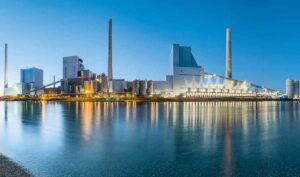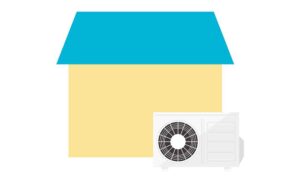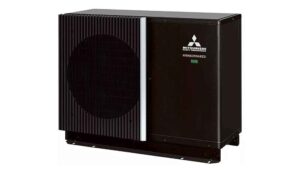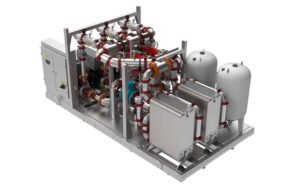Why is the air conditioning so cold?
14th July 2014 To building owners and, probably more importantly, the building’s occupants, attaining equitable temperatures for all is fraught with difficulties if not impossible. Rob Dickie of Glasgow-based contractor B-DACS explains in a blog on the company’s website why setting the system to a reasonable temperature requires compromises.
To building owners and, probably more importantly, the building’s occupants, attaining equitable temperatures for all is fraught with difficulties if not impossible. Rob Dickie of Glasgow-based contractor B-DACS explains in a blog on the company’s website why setting the system to a reasonable temperature requires compromises.
Why are some people always colder than others?
As anyone who works in an air conditioned office will tell you, the main problem is that everyone feels the temperature differently.
How warm or cool you feel depends on a number of factors, including body type, activity levels and clothing. If you wear a suit and walk around the building all day, you’re going to feel hotter than if you’re a sedentary worker in a T-shirt and shorts. The exact temperature on the thermostat doesn’t matter as much as your personal preferences.
It’s a cliché that women always feel colder than men but there’s an element of truth behind it. Women tend to have less muscle than men and wear lighter clothing that leaves their skin exposed. As a result, they generally retain less heat.
If you have a lot of people in the same office building, all doing different jobs, it’s extremely difficult to find a temperature to suit everyone. It’s tough enough to make sure workers are comfortable enough to stay productive and concentrate fully on their jobs.
Why are public buildings always freezing?
On hot days, public buildings often feel freezing. It’s especially bad when you first walk in from outside, dressed in summer clothes and getting used to the heat.
Sometimes the air conditioning is set at too low a temperature and should be turned up. Doing so would save significant amounts of energy and make the conditions more bearable for everyone. It’s something that businesses need to look carefully at when assessing their long-term running costs and carbon footprints.
However, in other instances, it comes down to the difficulty in striking a balance between keeping employees happy and keeping visitors happy. Employees may have to spend the entire day inside the building, dressed in suits, uniforms or specialised clothing. They have a job to do, which might involve walking or carrying things around, so it’s vital that the temperature allows them to stay comfortable and productive.
Why is it colder in some parts of the buildings than others?
Even if the air conditioning is managed as well as it can be, there are always limitations in the building design and layout. It’s important to be aware of these when installing an hvac system so you can counteract these as much as possible.
However, when the cooling system is in place, there’s only so much that building managers can do.
Air distribution is vital to maintaining a consistent temperature throughout the building. If it’s ineffective, you’ll always end up with some areas receiving more cooling than others.
Thermostat positions also make a difference – if they’re placed somewhere which is warmer or cooler than the rest of the building, it’s very difficult to get the temperature right.
Finally, your location within the building affects how you experience the temperature, especially if you’re unable to move from your desk. Air conditioning fans need to blow out cold air to bring the room down to a reasonable temperature. So, if you’re sitting right below one, you’ll feel much colder than you would do anywhere else.
What can I do about this?
There are plenty of simple steps you can take to make sure your air conditioning doesn’t feel too cold. Try:
• Introducing flexible dress codes, including removing suit jacket and ties, just like they do in Japan during the summer months.
• Making sure you’re only cooling as much you need to, making sensible adjustments for outdoor temperatures.
• Asking different people for feedback on the conditions, allowing you to make appropriate changes to how you control the system.
Finally, if you need a new air conditioning system for your building, there are different options available that give you greater control. VRF or VRV air conditioning allows you to manage different zones individually, using heat recovery to maximise energy efficiency. Advanced central controllers enable you to set different schedules, while good air distribution will make your system run much more effectively.







